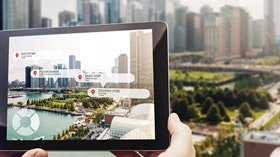Homepage
•
Learning Library
•
Blog
•
5 ways to move from experience to creation in AR, VR
Expand breadcrumbs
Expand breadcrumbs
- Learning Library
- Blog
- 5 ways to move from experience to creation in AR, VR
- Homepage
- •
- Learning Library
- •
- Blog
- •
- 5 ways to move from experience to creation in AR, VR
5 ways to move from experience to creation in AR, VR
By Jaime Donally
January 22, 2018








